Alfred Angelo Bridal was a renowned manufacturer and retailer of wedding dresses, recognized for its elegance and quality in bridal fashion. Headquartered in Delray Beach, Florida, the company carved a niche for itself not only in wedding dresses but also in designing attire for bridesmaids, mothers of the bride, and flower girls, along with offering a variety of wedding accessories. The legacy of Alfred Angelo began in the mid-1930s in Philadelphia, founded by Alfred Angelo Piccione and his wife, Edythe Piccione. While Edythe brought her creative flair to the design of the dresses, Alfred focused on the manufacturing and business development, creating a perfect synergy that would define their brand for decades.
Throughout its history, Alfred Angelo maintained a reputation for producing high-quality, beautiful bridal and formal dresses that were also affordable. The company expanded its reach by selling through name-brand stores and partnering with various retailers. By the 1980s, the founders’ children took over the management, continuing the tradition of excellence. They introduced diverse collections such as Alfred Angelo, Sapphire, Modern Vintage, and Disney Fairy Tale collections, each catering to different styles and price ranges. This ability to adapt and innovate helped Alfred Angelo remain a beloved name in the bridal industry for over 80 years.
In addition to its widespread retail presence, Alfred Angelo Bridal also gained popularity through media exposure, most notably being featured in a 2013 episode of the television show Undercover Boss. This appearance highlighted the company’s commitment to customer service and quality, further solidifying its standing in the industry. With over 63 Alfred Angelo Bridal Stores across the United States and a distribution network in more than 1,500 wholesale stores worldwide, the brand’s influence and reach were truly global.
For vintage clothing enthusiasts, understanding the evolution of Alfred Angelo’s logos and tags is crucial in identifying and appreciating the historical context of their pieces. The logos and tags have undergone significant changes over the decades, reflecting shifts in branding and fashion trends. Whether it’s the intricate designs of the 1950s or the sleek, modern tags of the 2000s, each era of Alfred Angelo’s branding tells a story of its time, making these dresses not just garments, but pieces of fashion history.
Famous Alfred Angelo Bridal Showcase
How to tell if Alfred Angelo is vintage from the logo
Alfred Angelo, famous for its bridal wear, has seen its logo evolve over the decades. The changes in the logo can help identify the era a specific piece is from. Below is a guide to the different Alfred Angelo logos and their respective periods.
1960s to 1980s Alfred Angelo logo
- The logo from this era features a handwritten script style
- The text “Alfred Angelo” is written in a cursive, elegant font
- This logo exudes a classic and timeless feel, aligning with the bridal fashion of the time
- Notice the detailed flourishes and the distinct, personalized touch

1960s to 1980s Alfred Angelo logo
1980s to now Alfred Angelo logo
- The logo from this era shifted to a more modern and clean design
- The text is now enclosed in an oval border, providing a structured look
- The font is simple and straightforward, reflecting a more contemporary aesthetic
- This design choice likely aimed to appeal to a broader audience and modern tastes
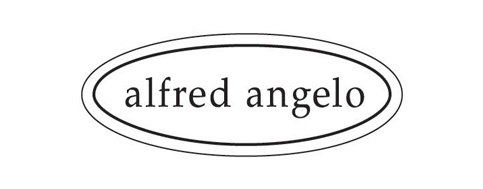
1980s to now Alfred Angelo logo
How to tell if Alfred Angelo is vintage from the tags
Alfred Angelo has a rich history in the fashion industry, particularly known for its wedding dresses and evening wear. The evolution of its tags over the decades reflects changes in branding, style, and production techniques. Here’s how you can identify if an Alfred Angelo piece is vintage based on its tags.
Having trouble identifying vintage tags or labels? Upload a picture on our vintage tag identification page, and we’ll assist you!
1950s vintage Alfred Angelo tags
- Often features intricate designs with the brand name “Alfred Angelo Original.”
- Includes the phrase “Designed by Edythe Vincent.”
- Tags are typically rectangular with elaborate borders.
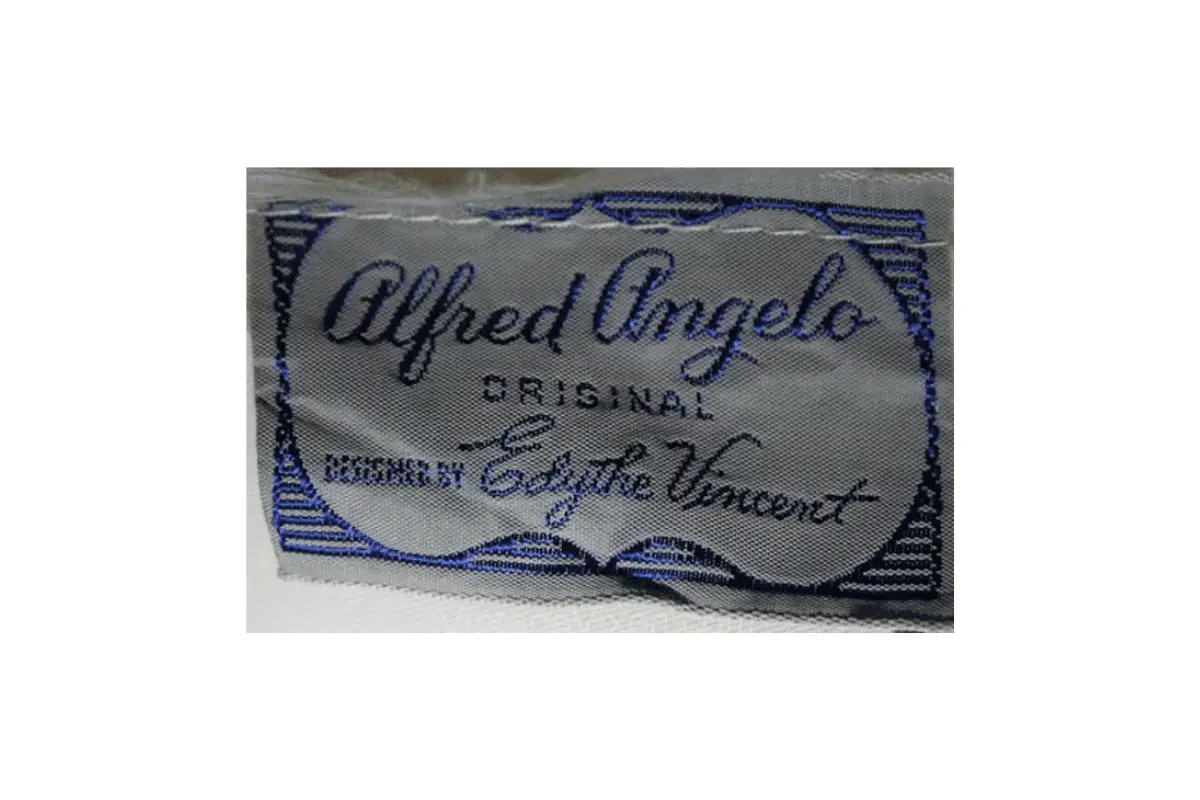
1950s Alfred Angelo tags
1960s vintage Alfred Angelo tags
- Simple, elegant design with a clear, bold font.
- Tags often have a border around the brand name.
- Color schemes are usually monochromatic.
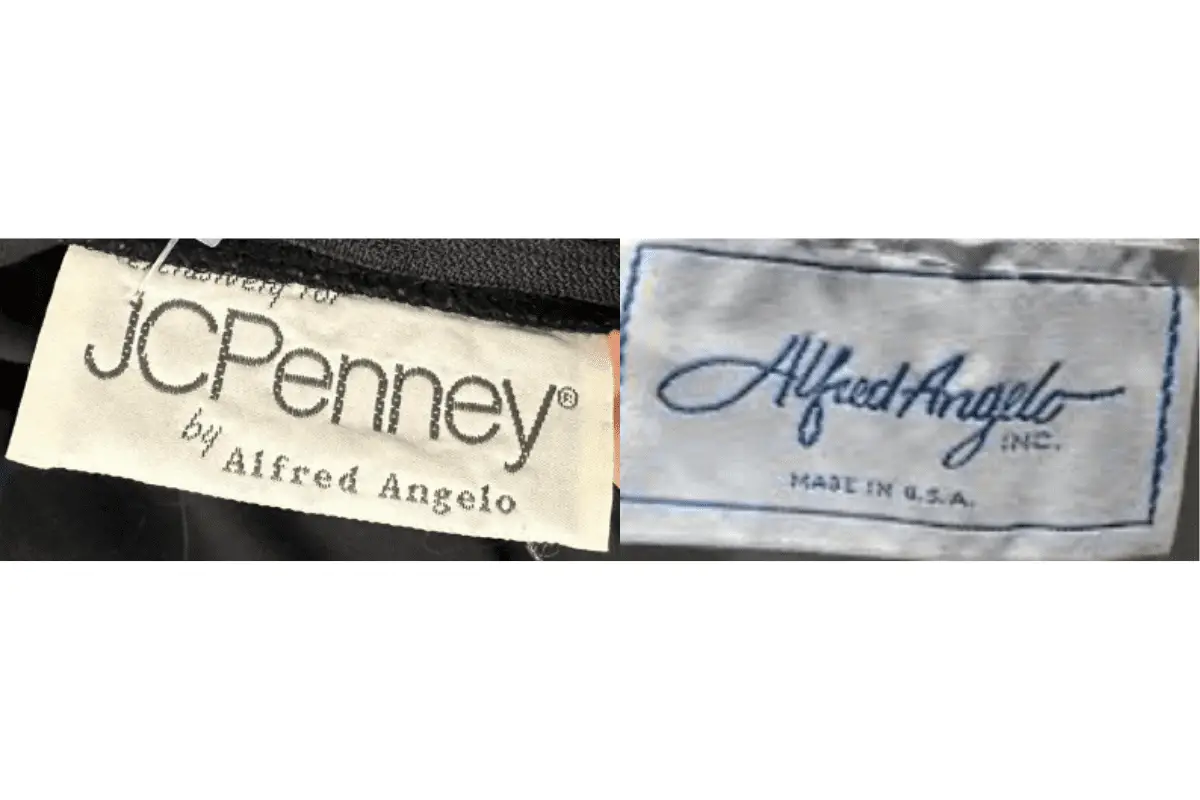
1960s Alfred Angelo tags
1970s vintage Alfred Angelo tags
- Features a mix of bold and cursive fonts.
- Often includes playful elements like hearts or floral designs.
- Some tags denote “A Division of Alfred Angelo.”
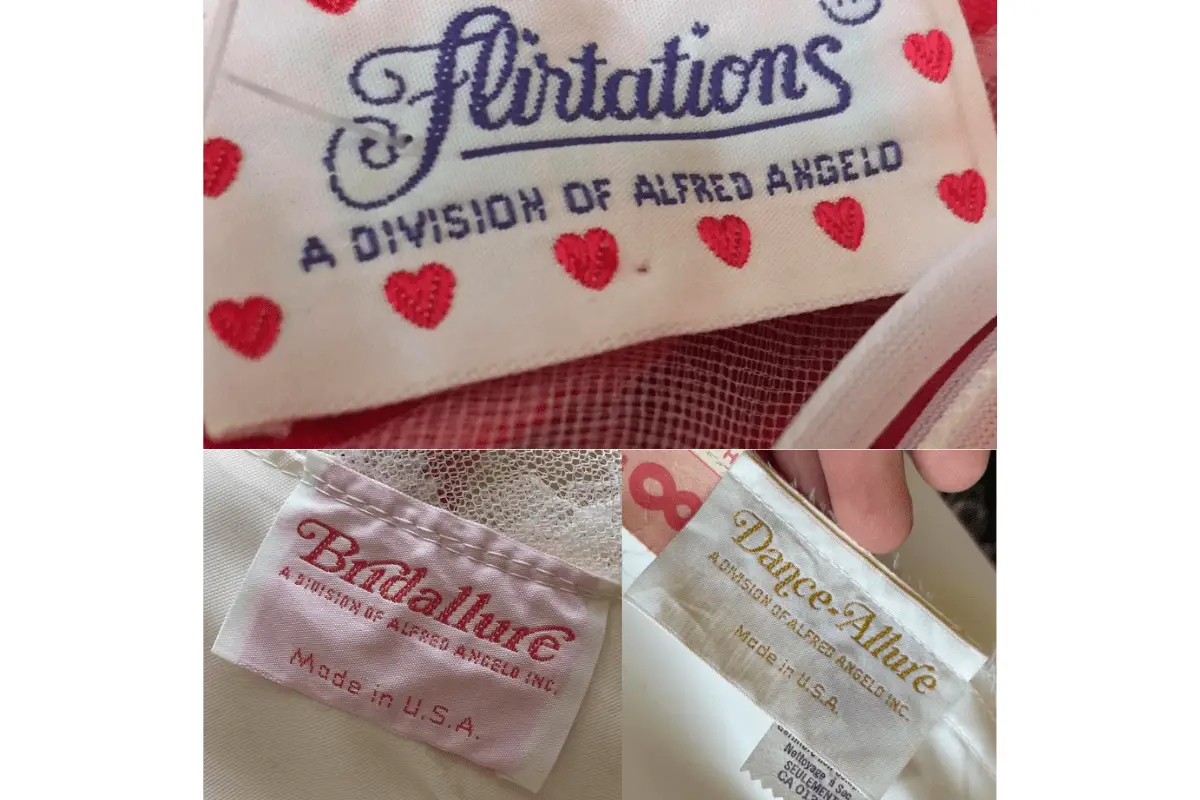
1970s Alfred Angelo tags
1980s vintage Alfred Angelo tags
- Tags become more standardized with clean, bold fonts.
- Introduction of different lines such as “Bridalure” and “Dance-Allure.”
- Commonly includes the phrase “Made in U.S.A.”
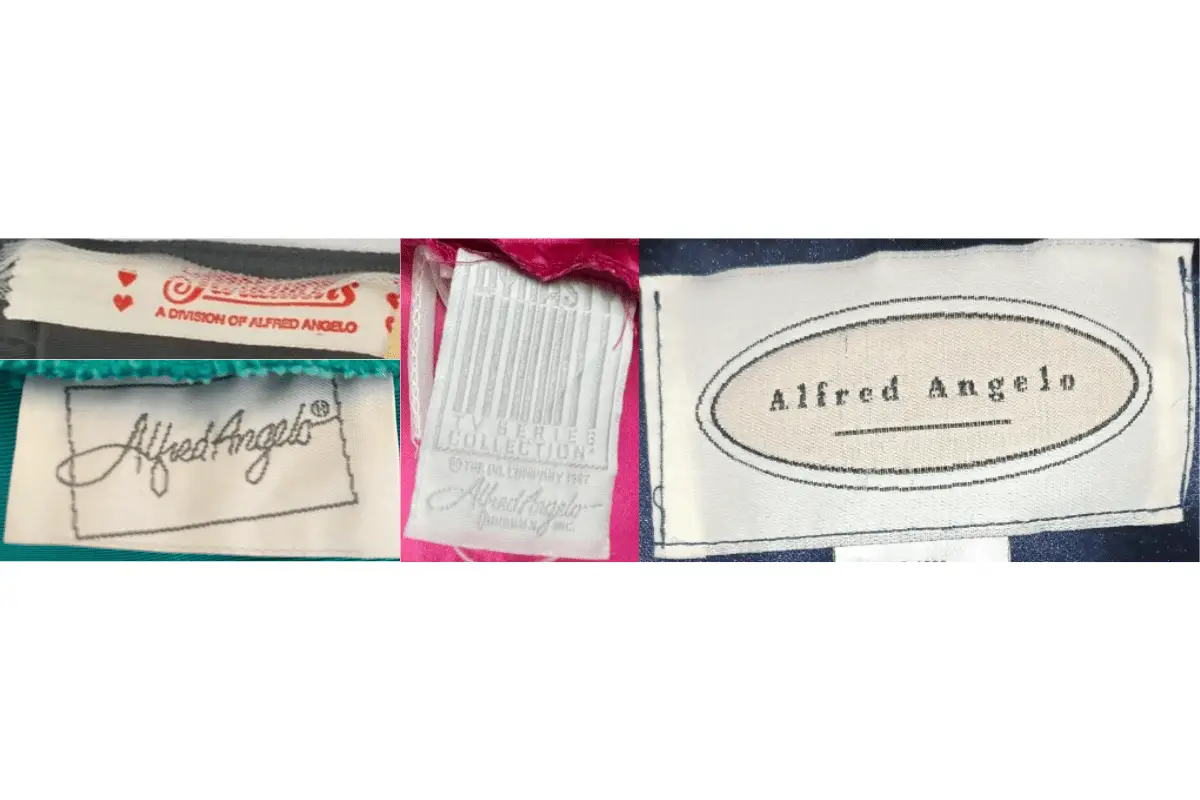
1980s Alfred Angelo tags
1990s vintage Alfred Angelo tags
- Consistent use of a simple, elegant font for the brand name.
- Tags often feature a minimalist design with a border.
- Some tags include the phrase “Exclusively for JCPenney.
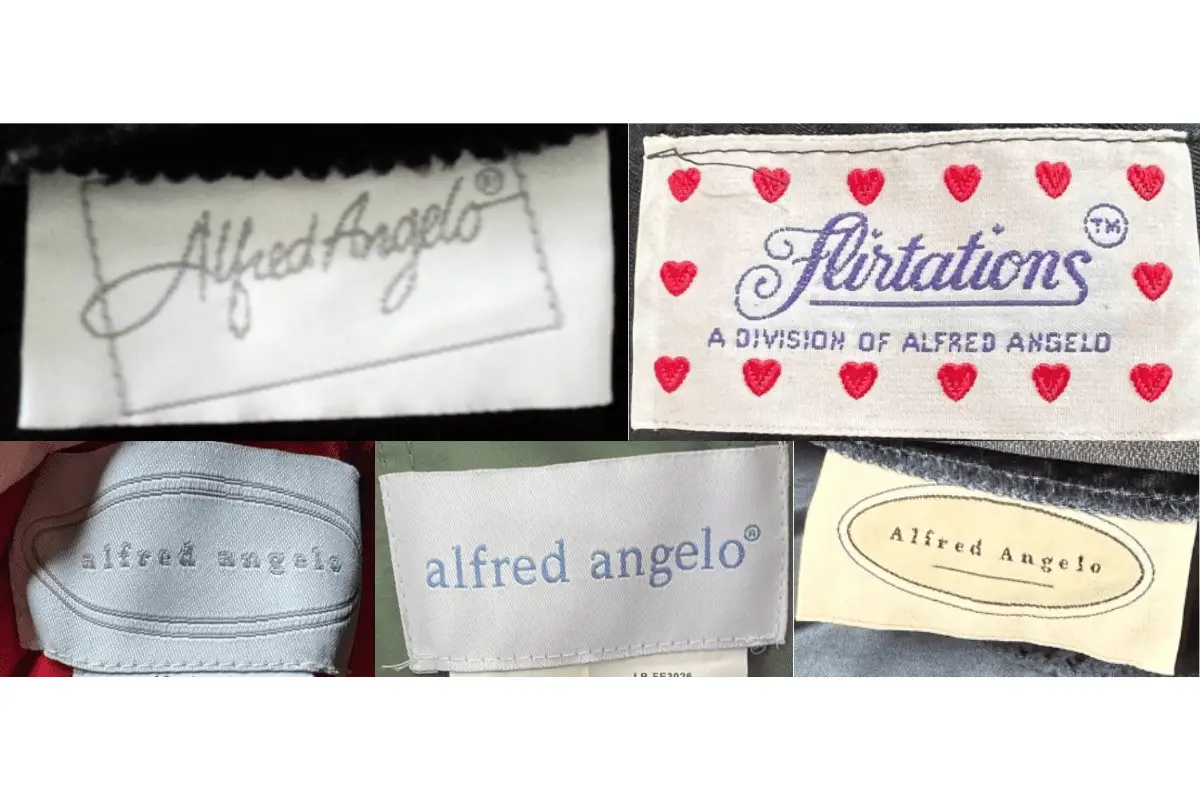
1990s Alfred Angelo tags
2000s vintage Alfred Angelo tags
- Modernized tag designs with sleek fonts and minimalistic styles.
- Some tags feature loop designs for attachment.
- Use of various colors and materials for the tags, maintaining the brand’s elegant look.
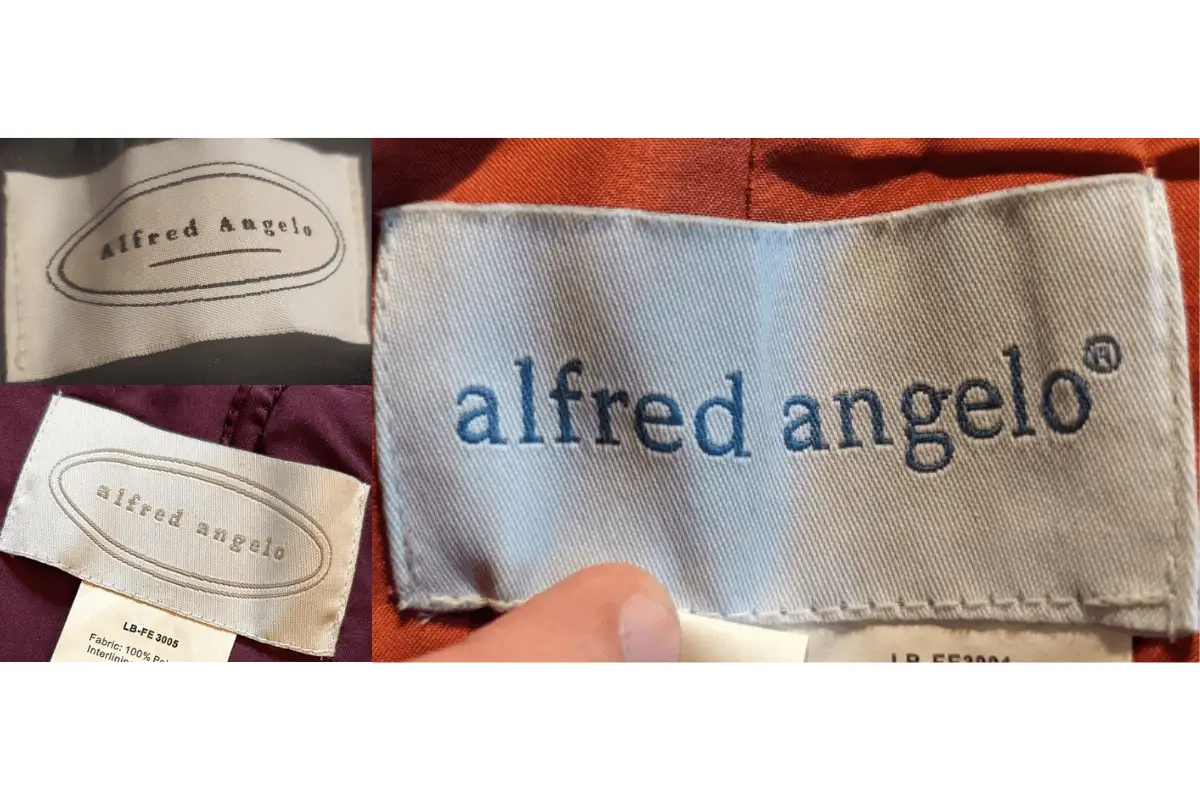
2000s Alfred Angelo tags
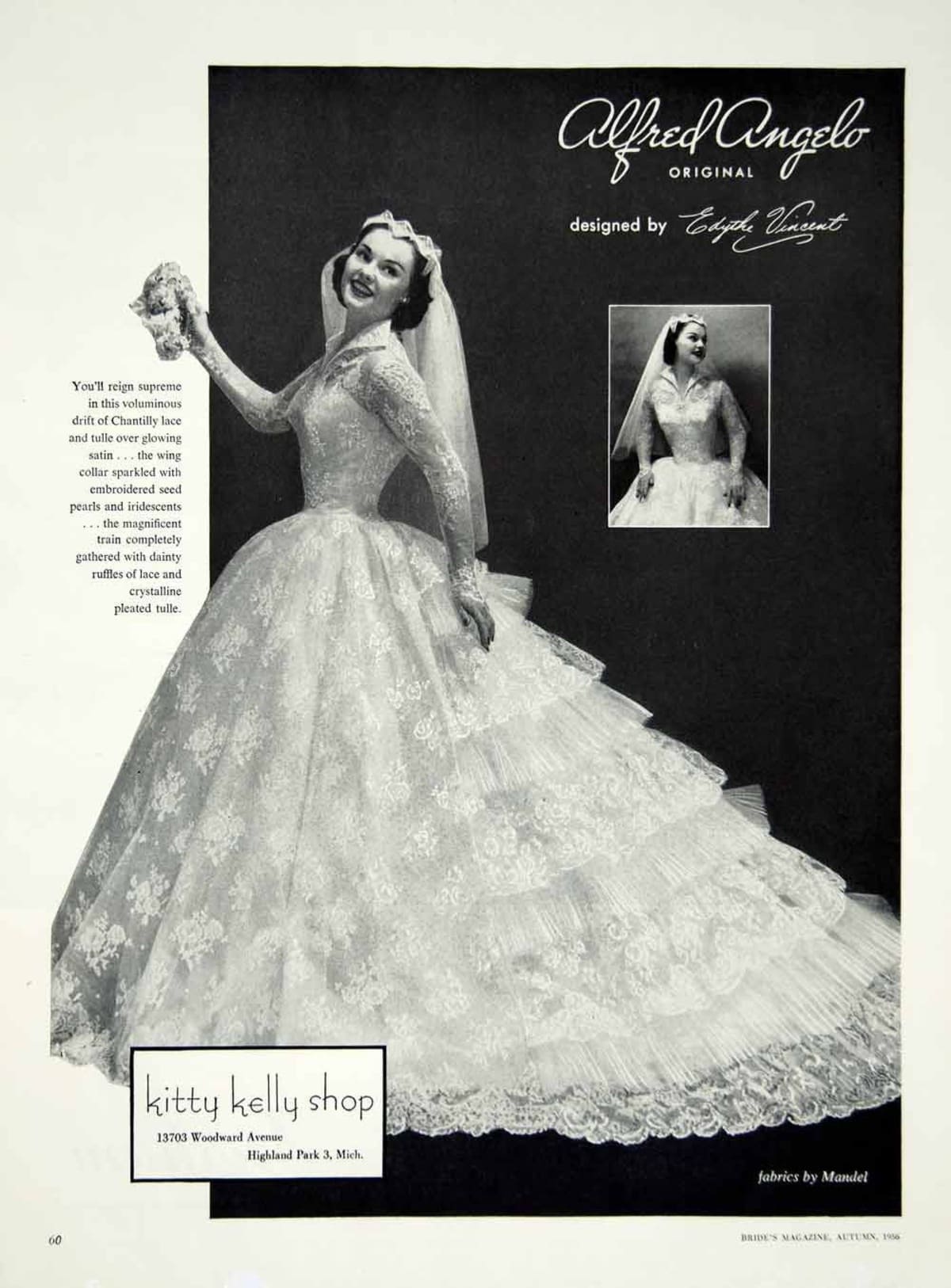


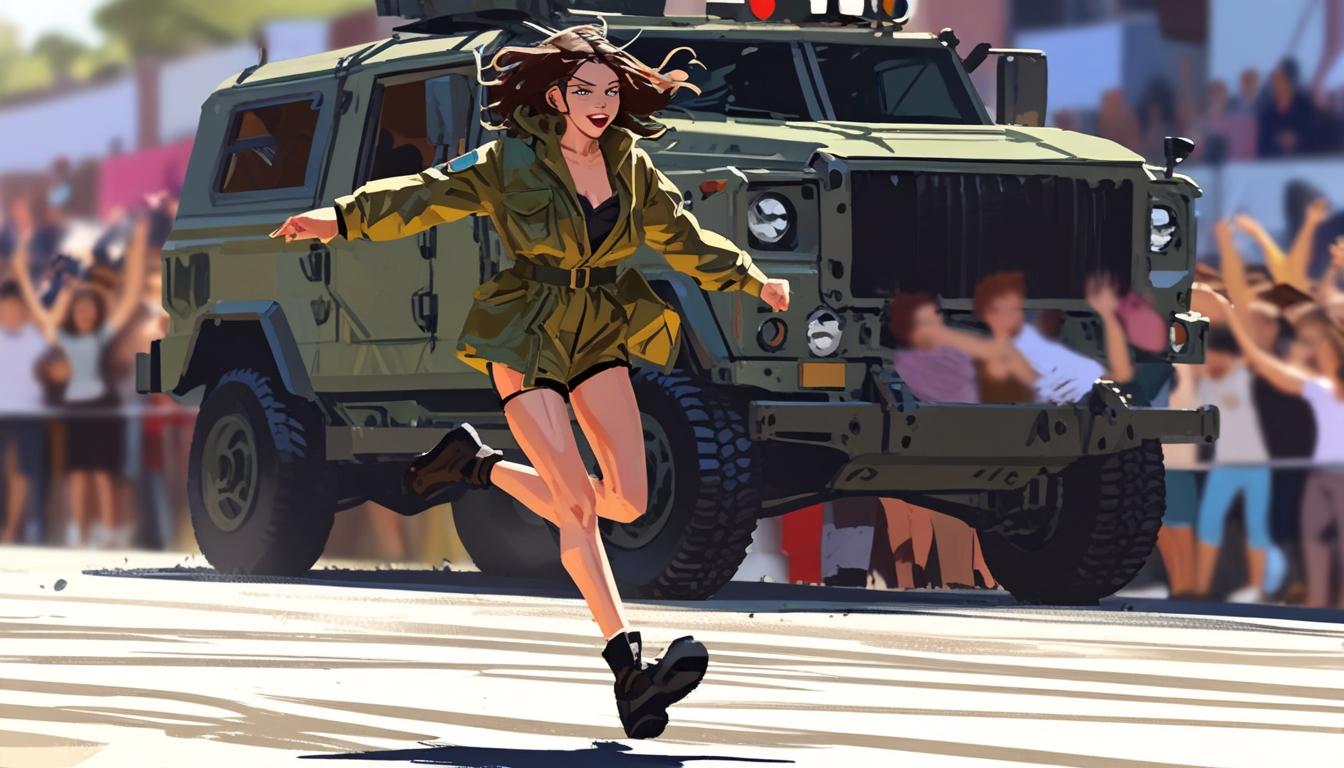
Thanks for your help and for writing this post. It’s been great.
Appreciation to my father who informed me on the topic of this web site, this website is really amazing.
Good day! Would you mind if I share your blog with my zynga group?There’s a lot of folks that I think would really enjoy your content. Please let me know. Cheers
Heya i am for the first time here. I found this board and I to find It truly helpful & it helped me out much. I hope to offer one thing back and help others like you aided me.
Hello there, You’ve done a great job. I will certainly digg it and personally recommend to my friends. I’m sure they will be benefited from this site. http://www.kayswell.com
Your mode of explaining everything in this piece of writing is genuinely pleasant, every one be capable of simply be aware of it, Thanks a lot.
Very nice post. I just stumbled upon your weblog and wished to say that I’ve truly enjoyed surfing around your blog posts. After all I will be subscribing to your feed and I hope you write again very soon!